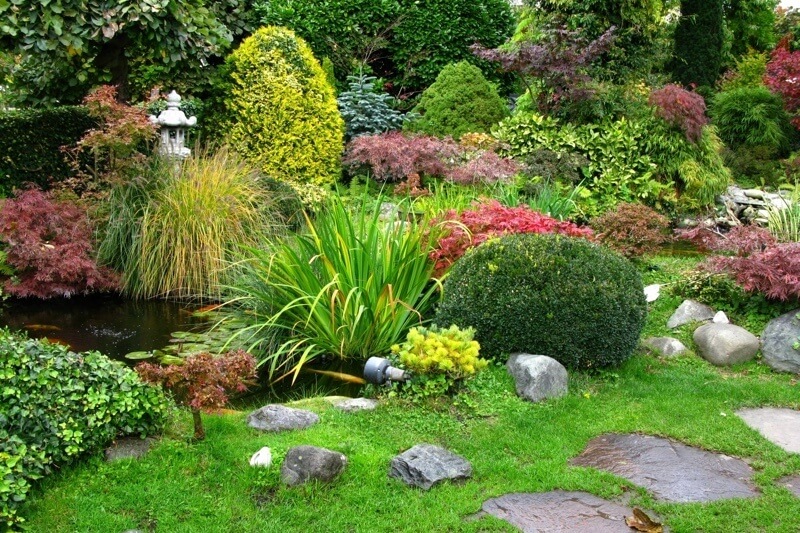Middle Tennessee is known for its lush, green canopy of native trees and beautiful ornamentals, which are most stunning during the warmer weather months. When the temperatures drop, though, and the lush greenery begins to fade, it’s imperative to tend to your trees. In fact, fall and winter provide the perfect time to prune. Most ornamental trees and shrubs such as boxwoods, hollies, crabapples, viburnums and yews, are best pruned during the time that they are dormant, which is during the winter months. But there’s a right way to prune — and a wrong way. We asked consulting arborist Cabot J. Cameron, owner of Druid Tree Service, for his top suggestions on how to properly care for trees during the fall and winter so that they return lush and healthy in the spring. Here’s what he had to say.

6 Steps to Successful Pruning
1. Get rid of anything that could cause damage.
Homeowners should regularly inspect their trees for changes that might become hazardous, such as trees with dieback or hanging dead limbs. Additionally, look for anything that could potentially damage property, such as limbs falling on a car, your house or other bushes below. If you spot areas of concern, don’t try to remove the limbs yourself. Instead, contact a professional arborist in a timely manner to prune the culprits. “You don’t necessarily have to take off the entire limb to alleviate the problem of crowding,” Cabot says. “It would be wise to contact an arborist to assess the condition of the tree.”

2. Look at the color.
If leaves seem to be changing color earlier than on other trees, that may be indicative of a dead limb. “If the leaves are yellow or brown and the rest of the tree is green, it is an obvious indicator a limb may have died,” Cabot explains. Additionally, look for “wounds,” which are revealed if a leader has broken off or one leader goes left and another goes right. If there are damaged places, there are options. “You can put in a cable to reinforce that junction and keep the tree healthy and safe,” Cabot offers. Whenever possible, take preventive measures to anticipate the failure of a healthy tree.

3. Look at the growth.
Cabot suggests checking the growth characteristics of trees that may require directional pruning. Additionally, look at where the trees are growing to make sure branches are growing away from the center and not crossing and rubbing against one another.
4. Elevate low or drooping limbs.
You’ve likely seen trees on which the limbs are so low that it’s difficult to mow the grass below. An arborist may recommend that low or drooping limbs be removed, and that’s a good thing. Removing lower branches keeps them away from gutters, roof lines, fencing and driveways, and ensures that your property stays safe. “When pin oaks and other trees get bigger, you don’t need all the branches at the bottom. A visible trunk shows the age of the tree, and the steward of the tree can be proud that they have safely maintained it for a number of years.”

5. Consider the species.
In planning fall and winter maintenance, it’s important to consider the species of the tree. Fruit trees, hollies and foundational plants, such as boxwoods, are better pruned in the winter when the reaction to pruning is less severe. If boxwoods are pruned in summer, it causes increased spots for shoots of lighter color that leave your plant looking as if it had a bad haircut — and the same goes for crabapple trees. “If you prune a crabapple in the middle of summer, the tree may grow additional water shoots, which hides the architecture of the tree,” says Cabot. “If you prune in winter, you won’t get a bounce-back reaction from the tree’s natural response to wounding.”

6. Remove mulch.
If the landscaper has added deep mulch high around the roots of a tree, the results can be detrimental to the tree due to excessive moisture, which creates a habitat for such pathogens as fungus or insects. “Generally, I would just pull all the mulch away from the flare area of the tree so the roots are covered and not the trunk,” Cabot advises.
Ultimately, the fall and winter months are the perfect downtown to perform regular maintenance on your trees, enacting a thoughtful stewardship plan that ensure your trees are healthy and will return to their lush state come spring.
“Trees need our stewardship more than ever,” Cabot says, and we couldn’t agree more!
Want individualized guidance? Cabot Cameron will be available for a limited number of one-on-one pruning classes through the University of Nashville’s evening classes in the Spring Semester. Cabot is also available weekdays on all aspects of tree and shrub maintenance. Contact Druid Tree Service, Inc. at 615-373-4342.
This article is sponsored by Druid Tree Service, Inc.


















